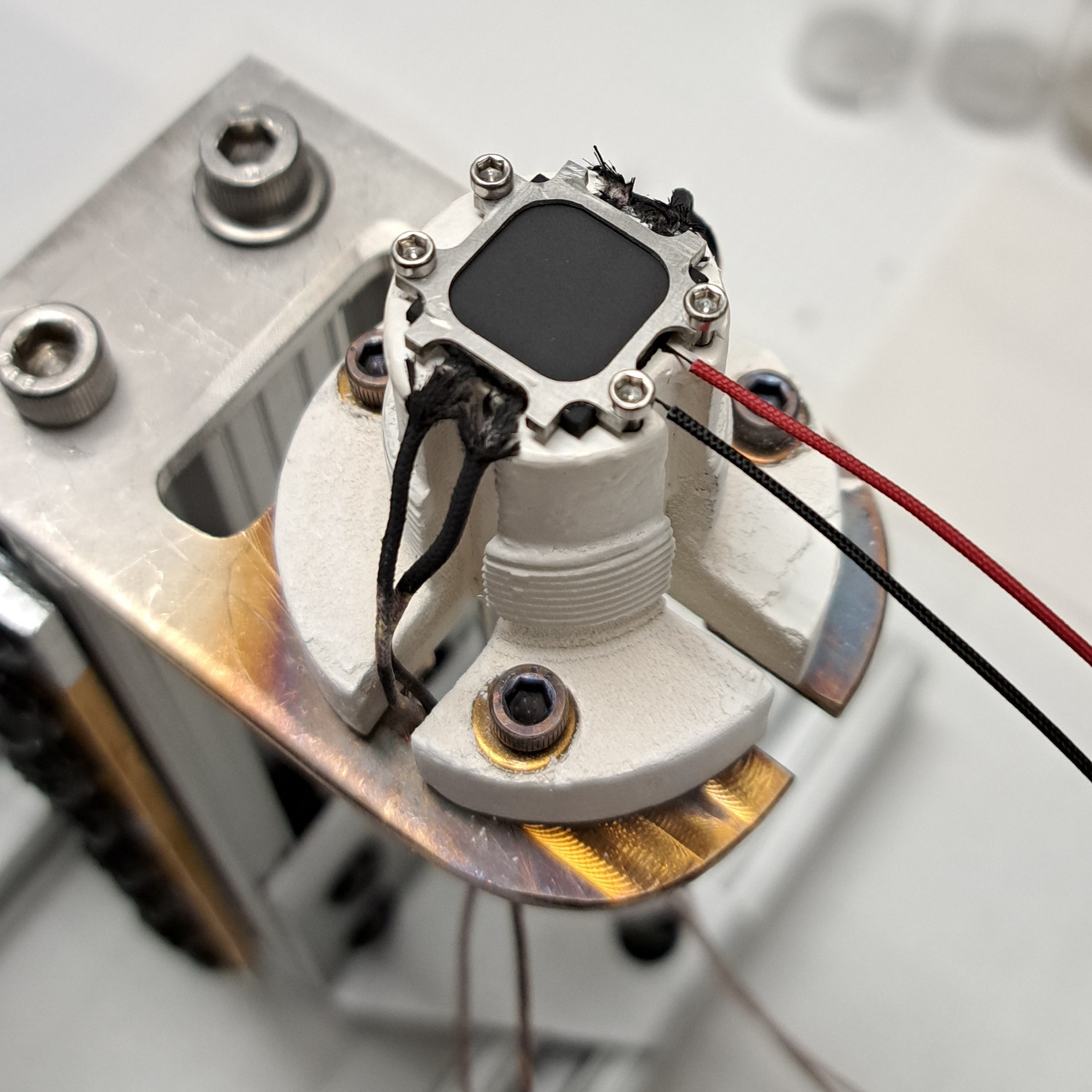News Story
Putting a Fire Protection Spin on a Clark School Rite of Passage

FPE rising senior Bernie Kramer with the firefighting rover he helped design.
Imagine if, as a junior or senior, you had the opportunity to contribute to your own curriculum, enhancing it for the students who come after you. What would you do if you could redesign one of the most important undergraduate engineering assignments in the Clark School?
This year, in ENES 499: Senior Projects in Engineering, that is exactly what students were asked to do, and one team put a fire protection engineering spin on the legacy they hope to leave.
FPE rising senior Bernie Kramer was one of the students who accepted the challenge to create a new project for ENES 100: Introduction to Engineering Design that will eventually replace its autonomous hovercraft design competition. The competition, which has become a rite of passage for all Clark School students, has been updated over the years to keep it challenging and fun. This year the faculty members who teach the course turned to their former students for inspiration.
“Our goal is to create more excitement among students from majors that have had less direct connection with the hovercraft project in the past,” says ENES 100 course coordinator and ENES 499 lecturer Kevin Calabro.
ENES 499 students didn’t just design theoretical assignments—they had to do them, too. Teams were asked to demonstrate that new engineering students could successfully complete their projects, and that the projects fulfilled ENES 100’s curriculum requirements. Kramer’s group proposed an autonomous fire-fighting rover that must navigate a large sandbox.
The rover must overcome obstacles, detect and suppress one or more fires, and collect and identify liquid samples. A successful design, says Kramer, will need to incorporate concepts from many majors: mechanical suspension capable of handling soft ground and hard obstacles; heat, infrared or ultraviolet sensors to detect the fires; motherboard design; signal processing and transmission for the primary navigation system; and chemical or biological sensors to identify samples.
The rover Kramer’s group built is guided by commands sent via radio frequency, which are derived from interpretations of what an overhead camera “sees.” It blows out fires with an onboard fan and collects liquid with a syringe. If the liquid is identified as water, the syringe can also be used to extinguish a fire, thanks to a special misting nozzle Kramer designed for it.
Kramer, an ENES 100 undergraduate teaching fellow, decided to take ENES 499 when he heard about its Spring 2014 theme. ENES 100, part of the Clark School’s Keystone Program of excellence in early engineering education, has been cited as a national model for increasing engineering student retention and graduation rates. The course had a significant impact on Kramer’s own academic experience.
“Having a project like [the hovercraft] to work on right off the bat really made me fall in love with engineering,” he says. “ENES 100 is [about] giving you a crash course in what it’s like to be an engineer and to work in cross-disciplinary teams.” The most inspiring part of the class, he adds, is that those teams, composed of strangers with little or no background in engineering, are able to produce something “truly remarkable” by the end of a single semester.
“This design experience will inform a project that will replace the autonomous hovercraft,” says Calabro. “Aspects of what each team learned and proposed will be incorporated into what we do. The ENES 499 project demonstrates what can be accomplished when students from different majors collaborate and apply their own disciplinary perspectives to a larger goal.”
Kramer’s ENES 499 teammates were Timothy Ayo-Ajayi, Andinet Desalegn, Zachary Hutcheson, Joseph Langreo, Nosheen Moosvi, Dan Sullivan, and Polina Vorozheykina.
For more information, read and watch a video about ENES 100’s hovercraft competition at:
www.keystone.umd.edu/courses/enes100
Published June 20, 2014









